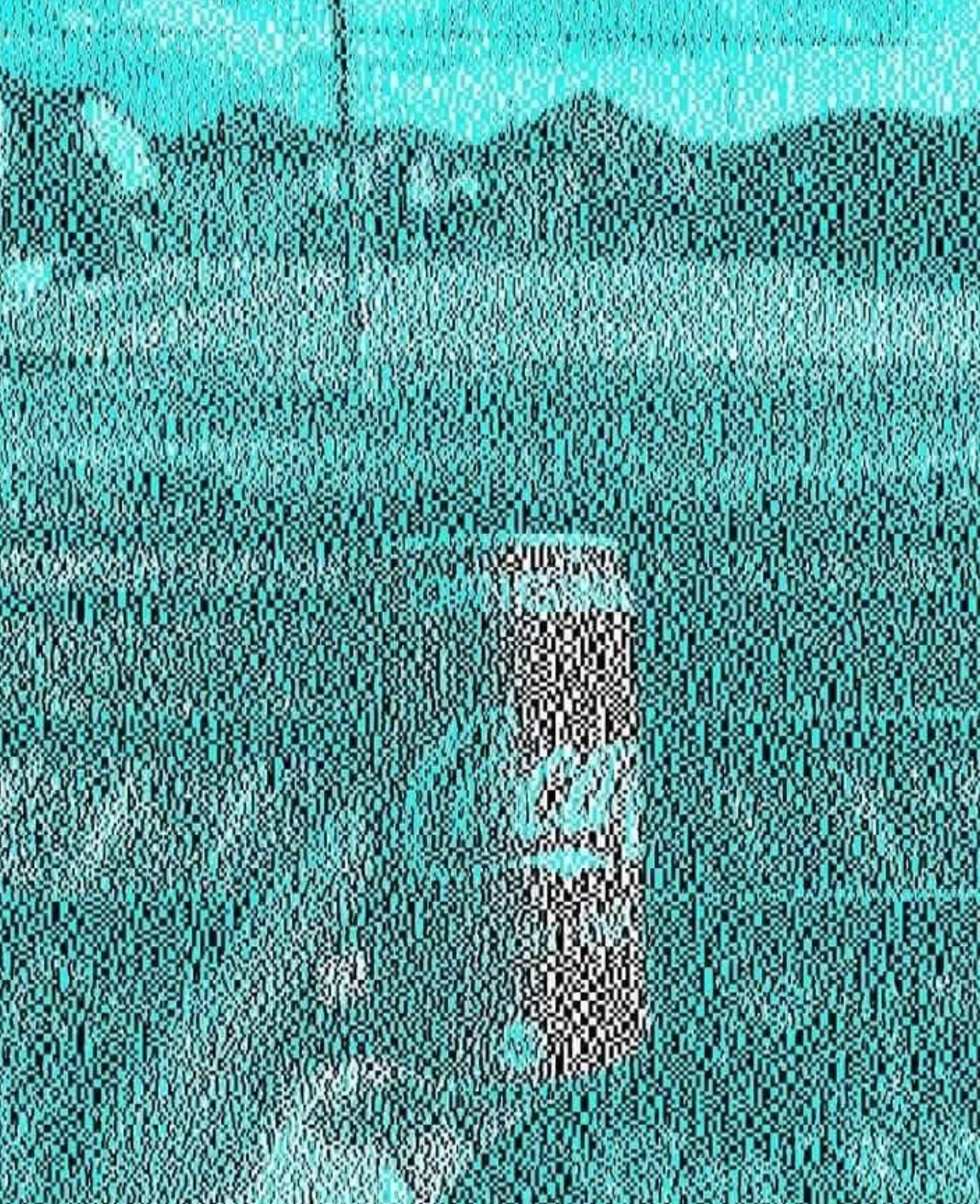Our Minds Fill In the Story
There is no red in this image. Look again. Or click the image for a larger version.
This illusion first appeared in 2021 on a Japanese website. Then in June 2023, the UK's Daily Mail used it to demonstrate how optical clues can trick the mind and why, providing a fascinating (and disturbing) insight into the human tendency to know for certain something we experience is true when in fact it's not.
Check out a similar striped Coke can illusion here, then check out this pepper and these banners.
From a physiological perspective, the science of the red Coke can is fairly simple: Two types of photoreceptor, rods and cones, located at the back of our human eye, respond to visual input. Rods are sensitive to motion, cones are sensitive to light, and each responds to a different color. Or in the UK, colour.
The cyan filter in our cones only lets through cyan-colored light, meaning anything else should appear grey. But our brain knows that Coke cans are red, and interprets the grey light to meet expectations. We want the can to be red, so the can is red. Psychology over reality. Visual or auditory, the desire to interpret something according to our personal perceptions trumps the truth. We're easily fooled into seeing what we want to see rather than what we actually see.
On the surface, this false confidence in reality may seem innocuous and even amusing. Seen through a political, militaristic, sexual, or corporate lens, this odd psychological phenomenon – like this Coke can – takes on new meaning and ominous weight.
According to gagadget.com, optical illusions play on the peculiarities of visual information processing, leading us to experience data as we want to experience it rather than as it truly presents. Famous examples include the Mueller-Lyer illusion, the Fraser spiral, and the Penrose triangle.
Popular audio examples of data misinterpretation include Yanny Laurel, Brainstorm Green Needle, and the McGurk effect.
The Coke can illusion was particularly interesting because of its ubiquitous recognizability as one of the world’s most iconic brands. Some stimuli create instant recognition while others take time to fully comprehend. These other six illusion examples are like magic; we know something funny is going on, but it takes a moment to analyze and assess the mystery. We see the Coke can and know it's red, end of story.
This is precisely how #CorporateStorytelling can work for us or against us as we tell our stories to others and they tell their stories to us. What we say and what we hear as absolute truth are often anything but.
If I'm in the market for a new vehicle and love the BMW brand, every piece of corporate storytelling I read or hear about BMW becomes positive and every story about competing products becomes negative.
If I'm deeply invested in completing the next business deal despite its potential risks or uncertainties, I'll see and hear each bit of evidence in favor of that deal through my unique personal lens in order to convince myself it's the right move. Reality and illusion get blurred in order to prove the story I like best.
Other terms for this illusory phenomenon are confirmation bias, heuristics, and apophenia (the tendency to perceive meaningful connections between unrelated things). Simply put, it's just easier, faster, and takes less effort to go with what we think we know that we know. The Coke can is red, we can move on with our day.
But such ease of assessment can become detrimental when onboarding biased or false messages. The NLP Lost Performative is a psychological concept defining when someone presents a personal belief to us as though it's a universal truth. It also determines why we tend to accept belief as fact without questioning that belief as we would if we just heard it as someone’s individual opinion.
Bottom Line
Carefully consider reality versus illusion in any “proof” you’re shown or story you tell. Assess how often cyan and gray easily trick you into seeing red. Acceptance of and action based on illusion can skew our perspectives on everything from the Israel-Gaza conflict to our judgment of the national economy to our views on Taylor Swift on camera at a Travis Kelce game.
The Coke can may not in fact be red, but if the red story fits our preferred narrative, the die is cast. Just because the person delivering the message is compelling doesn't mean they're right. And when we share our message with others, we owe them the truth above personal biases.




